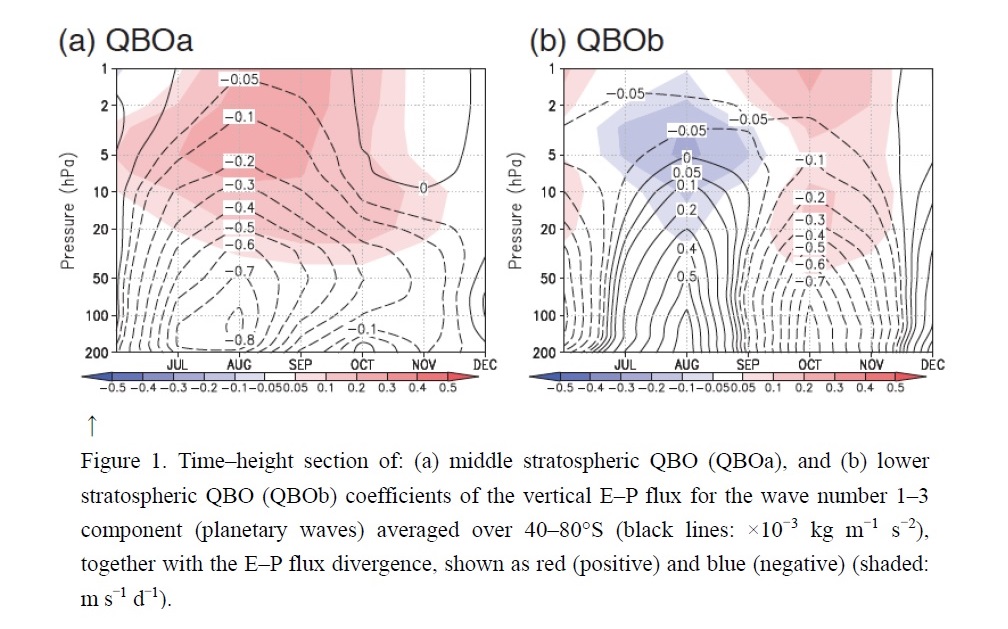Graphical Abstract
Yamashita, Y., H. Naoe, M. Inoue, and M. Takahashi, 2018: Response of the Southern Hemisphere atmosphere to the stratospheric equatorial quasi-biennial oscillation (QBO) from winter to early summer. J. Meteor. Soc. Japan, 96, 587-600.
https://doi.org/10.2151/jmsj.2018-057
Graphical Abstract with highlights
Highlights:
- The mechanism by which the QBO modulates extratropical circulation over the Southern Hemisphere (SH) is poorly understood, as the various studies employed different height levels and metrics to define the phase of the QBO. Previous studies employed composite analysis that possibly includes signals other than the response to the stratospheric QBO.
- In this study, we examined the response of atmospheric circulation over the SH to the stratospheric QBO, defined by the equatorial zonal wind phases at middle- and lower-stratospheric levels.
- Regression coefficients associated with both middle- and lower-stratospheric QBO suggest an influence on the SH polar vortex from SH winter (June–August) through early summer (December) in the seasonal evolution.
- One possible pathway is that the middle-stratospheric QBO results in the SH low-latitudes stratospheric response through the QBO-induced mean meridional circulation, leading to a high-latitude response from late winter (August) to spring (September–November). This corresponds to the delay in the shift-down of the strong polar vortex, leading to the suppression of planetary wave propagation from the extratropical troposphere into the stratosphere (Fig. 1a).
- The other possible pathway involves the response to lower-stratospheric QBO that induces the SH late winter increase in upward propagation of planetary waves from the extratropical troposphere to stratosphere (Fig. 1b).







